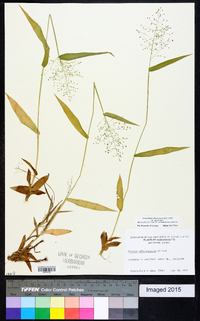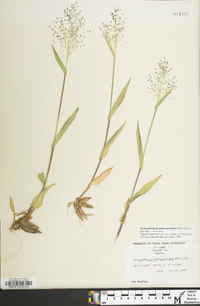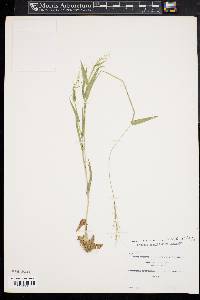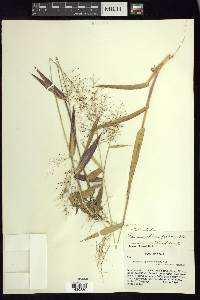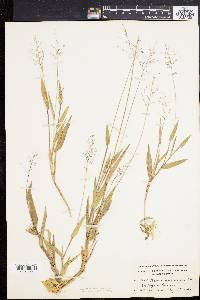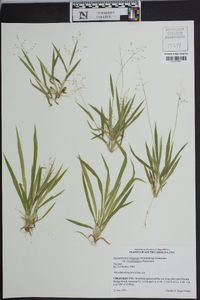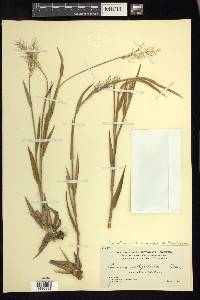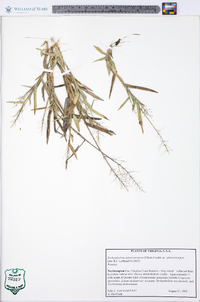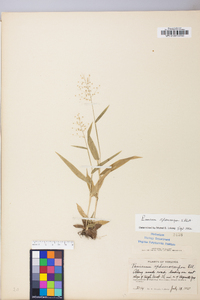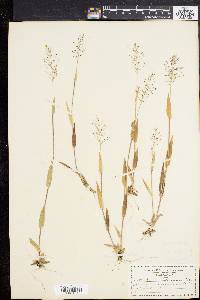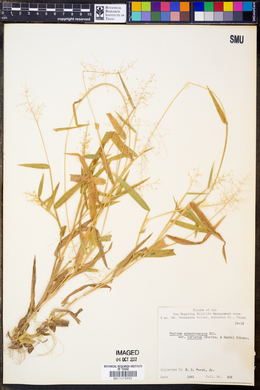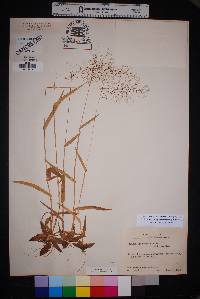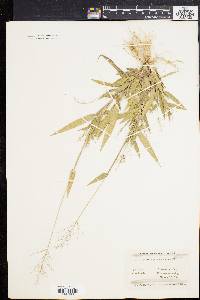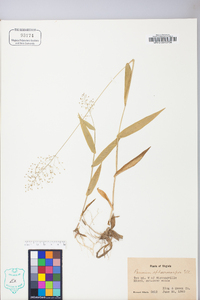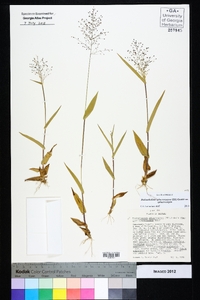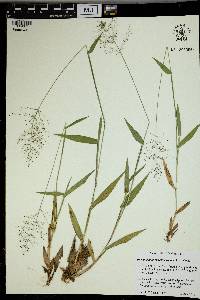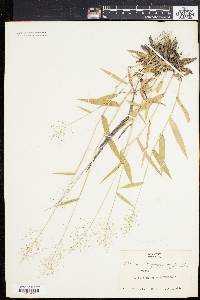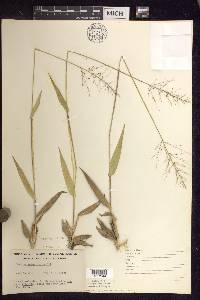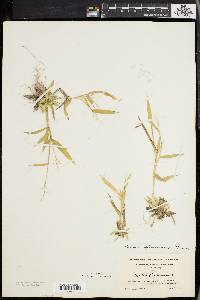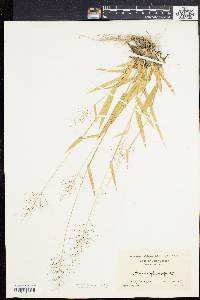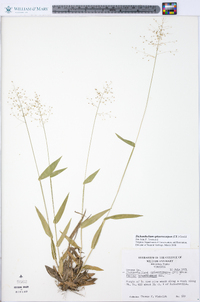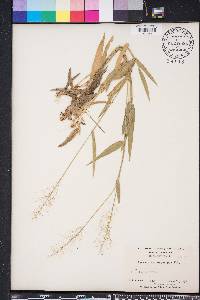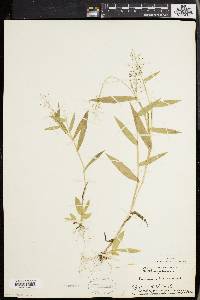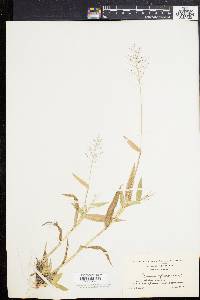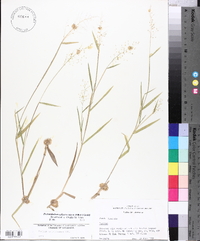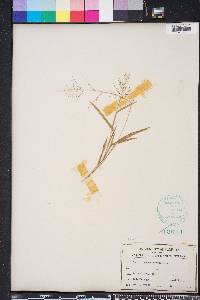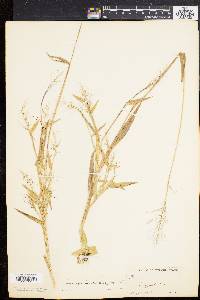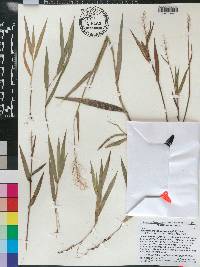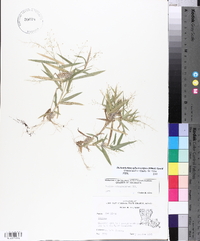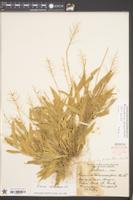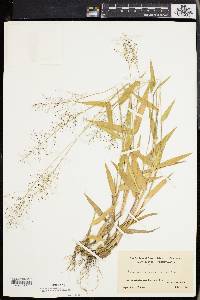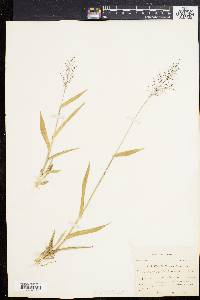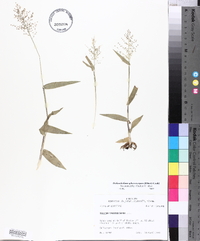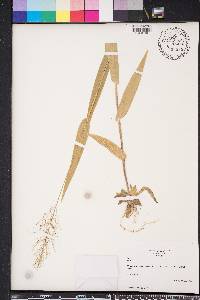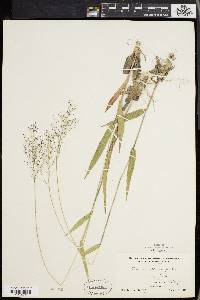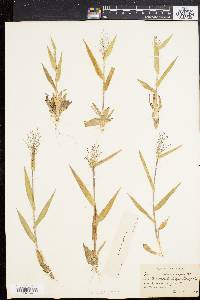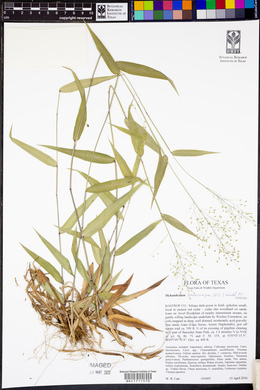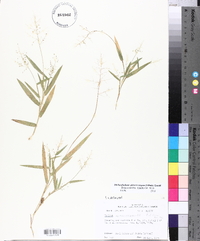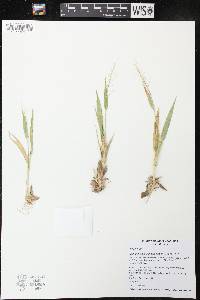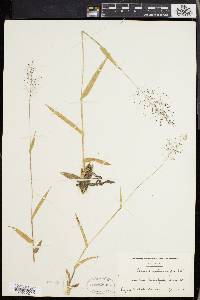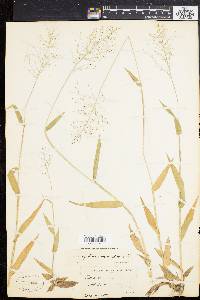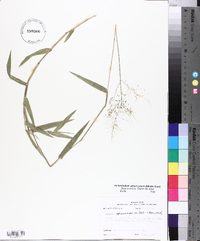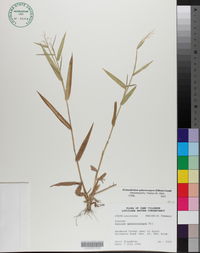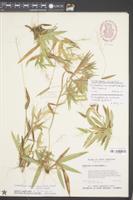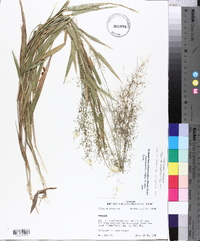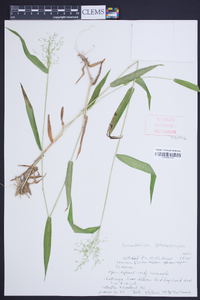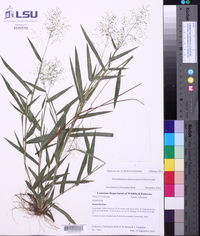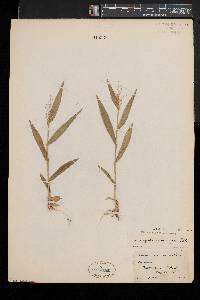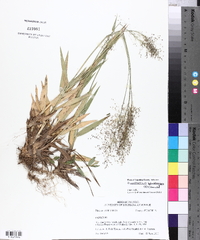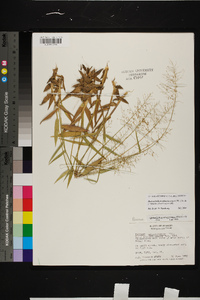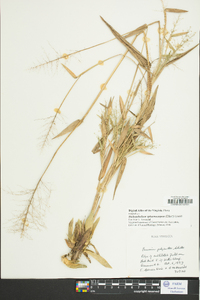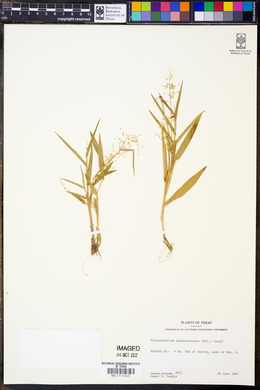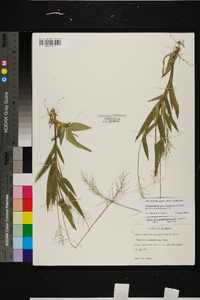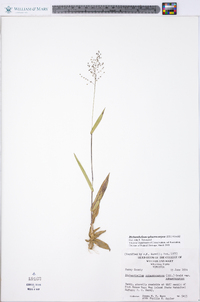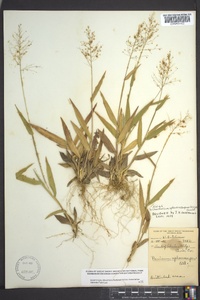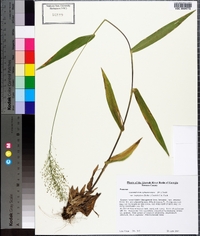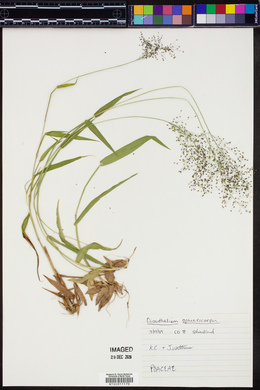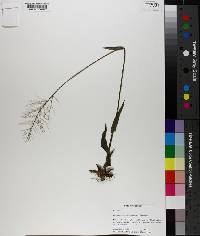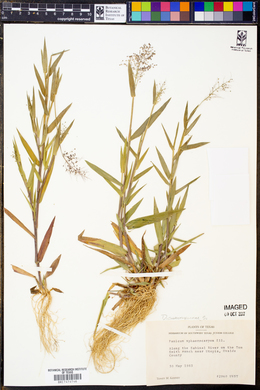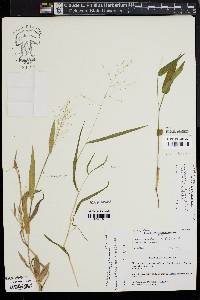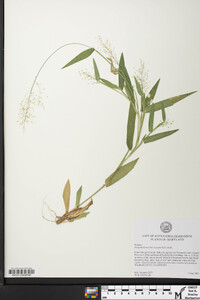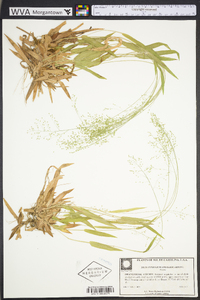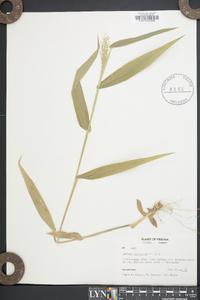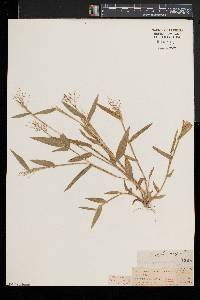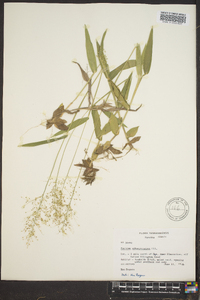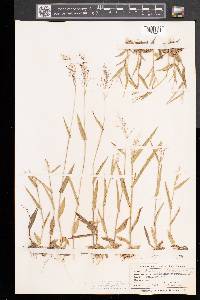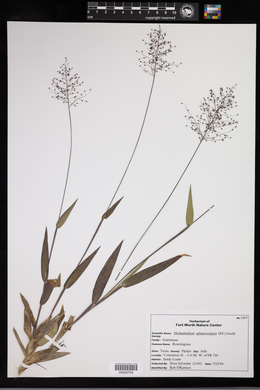Dichanthelium sphaerocarpon
|
|
|
|
Family: Poaceae
Round-Seed Witch Grass, more...Round-Fruited Panicgrass, roundseed panicgrass
|
Plants cespitose. Basal rosettes well-differentiated; blades 2-6 cm long, about 1 cm wide, ovate, the uppermost leaves often resembling the lower cauline blades. Culms 15-50 cm, few together, decumbent or ascending, light green, glabrous, slightly fleshy or thickened; fall phase branching mostly near the bases, with sparse branching; nodes appressed-pubescent or glabrous. Cauline leaves 3-4(6); sheaths sometimes overlapping near the bases, glabrous, margins ciliate; ligules almost obsolete, or of 0.2-0.8 mm hairs from a tiny membranous base; blades 1.5-10 cm long, 5-14 mm wide, thick, light green, faintly veined, bases cordate, with papillose-based cilia, margins white, cartilaginous. Primary panicles 4-14 cm, more than 1/2 as wide as long, usually long-exserted. Spikelets 1.4-1.8 mm, broadly obovoid-spherical, usually puberulent, sometimes glabrous. Lower glumes 0.4-0.8 mm, acute to obtuse, upper florets 1.1-1.5 mm, broadly ellipsoid, blunt. 2n = 18. Dichanthelium sphaerocarpon grows in dry, open woods and roadsides. Its range extends from eastern North America to Ecuador and Venezuela. It occasionally hybridizes with several other species, including D. polyanthes, D. acuminatum, and D. laxiflorum. Perennial herb, tufted 15 cm - 0.5 m tall Inflorescence: a terminal, branched arrangement of spikelets (panicle). Primary panicles atop the culms, 4 - 14 cm long, more than half as wide as long, long-exserted. Secondary panicles (when present) atop the branches. Fruit: a caryopsis, indehiscent, enclosed within the persistent lemma and palea. Culm: ascending or decumbent, 15 cm - 0.5 m long, round in cross-section, hollow, slightly fleshy or thickened. Nodes sometimes appressed-hairy. Fall phase sparsely branching, mostly from near the bases. Spikelets: about 1.5 mm long, broadly reverse egg-shaped to spherical, often minutely hairy. Basal leaves: in a rosette. Blades 2 - 6 cm long, about 1 cm wide, egg-shaped, uppermost leaves often similar to lower stem blades. Stem leaves: three to six, alternate, two-ranked. Sheaths sometimes overlapping basally, usually shorter than internodes, fringed with hairs. Ligules nearly obsolete, or composed of very short hairs from a membranous base. Blades thick, whitish along the margins, distinctly longer and narrower than basal leaves, 1.5 - 10 cm long, 0.5 - 1.5 cm wide, lance-shaped with a heart-shaped base, faintly veined, fringed with bumpy-based hairs basally. Glumes:: Lower glumes about 0.5 mm long, blunt to pointed at the apex. Upper glumes rounded to pointed at the apex. Lemmas:: Lower lemmas similar to upper glumes. Upper lemmas longitudinally lined, shiny, with rolled-up margins above. Paleas:: Lower paleas shorter than lower lemmas, thin. Upper paleas longitudinally lined. Florets:: Upper florets bisexual, stalkless, 1 - 1.5 mm long, broadly ellipsoid with a blunt apex, plump. Anthers three. Stigmas red. Similar species: No information at this time. Flowering: June to mid-July Habitat and ecology: Locally frequent in dry sandy soil in the dune area of Lake Michigan. Occurence in the Chicago region: native Etymology: Dichanthelium comes from the Greek words di, meaning twice, and anth, meaning flowering, referring to plants that may have two flowering periods. Sphaerocarpon means spherical-fruited. Author: The Morton Arboretum From Flora of Indiana (1940) by Charles C. Deam This species is infrequent in the lake area and reappears in the unglaciated area where it is rather local. In the lake area it is found in very dry, sandy or gravelly places and in the southern part of the state on black oak and black and white oak ridges. This species much resembles the preceding from which it may easily be separated by its larger anthers and usually much reduced upper leaf. It also much resembles Panicum microcarpon which has the nodes of the culms bearded, sheaths with conspicuous white marks, and very short ligules. ...... Indiana Coefficient of Conservatism: C = 5 Wetland Indicator Status: FACU |
|
|
|

